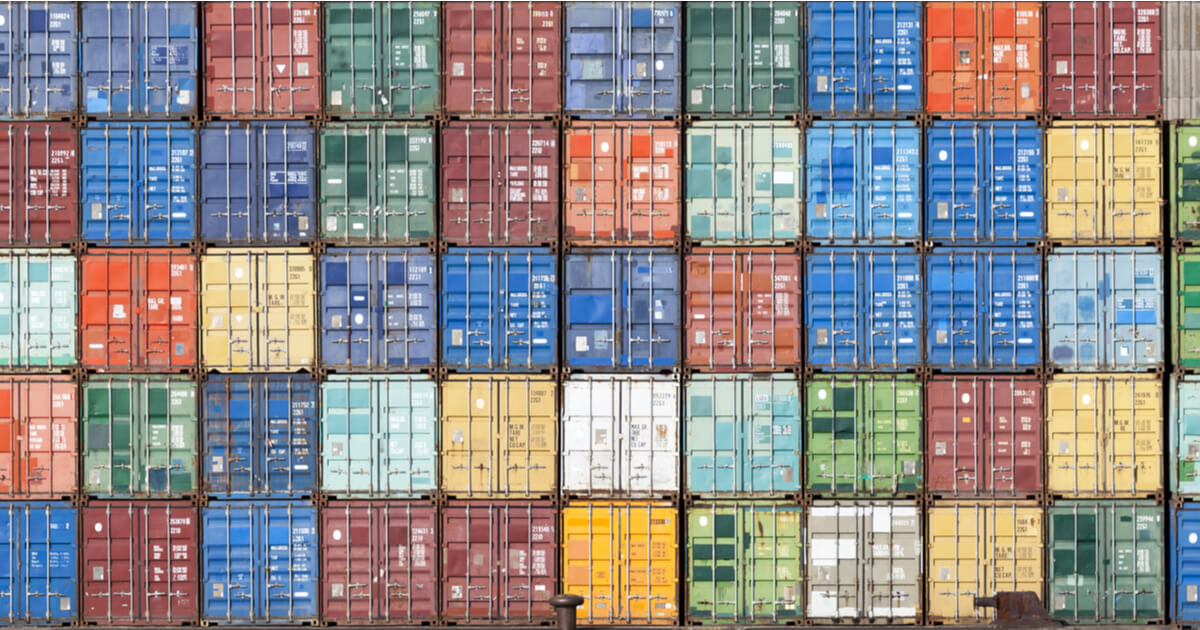
The White House’s intervention into a possible freight rail work strike pushes the legal deadline to effectively shutter that segment of the supply chain until mid-August at the earliest. As the 30-day cooling-off period ticks, labor shortages and inexplicable snarls see containers bottlenecked and piling up.
When adding in the number of cargo vessels idling off ports, upwards of $31 billion in trade is clogged in what has become a dysfunctional American import-export system.
“According to Marine Traffic, approximately 460,000 twenty-foot container equivalent units (TEUs) were loaded on vessels waiting off the East Coast ports and 180,000 TEUs are stacked on vessels off the West Coast ports as of July 13,” CNBC reports.
Both the railroad worker unions and shareholders agree that a tight labor market has exacerbated conditions. Freight rail employees find themselves on 24/7 call at times and salary increases have not kept pace with rising railroad profits or debilitating inflation. Rail workers in critical supply chain positions freely express their frustration with management and feel they are underappreciated.
At least a portion of the problem appears to be a self-inflicted wound by railroad management. During the last six years, profits have been buoyed by slashing the workforce by a stunning 29 percent. That’s equal to 45,000 people, according to the railroad’s primary oversight organization, the Surface Transportation Board.
Good-faith contract negotiations from 14 of the largest unions representing 140,000 employees have been underway since 2019, even after contracts expired in 2020. Adding insult to injury, while these talks to improve conditions and salaries were in play, railroads have reportedly eliminated perks. As one might anticipate, California continues to prove a hotbed of supply chain controversy and rail yards are at least as swamped as West Coast ports.
“The Port of Los Angeles informed CNBC there is a total of 19,665 rail containers that have been waiting nine days or longer, while the Port of Long Beach reported a total of 13,819 rail containers waiting the same time frame. Over 60 percent of all containers waiting at these ports are destined for the rail,” CNBC reported. “These long dwelling containers clog up the port’s land capacity, inhibiting the movement of trade within the port. Land capacity at the Port of Los Angeles is at 90 percent. For efficient land capacity, 70-75 percent is the optimal goal. As a result of this increase in container volumes, vessel processing is taking more time.”
Railroad policy also coerces employees to hold down positions far from their hometown or place where they were initially hired. Officials indicate they are unwilling to yield on redeployment policies. Many see this issue as a primary reason people do not apply to freight rail organizations, exacerbating the workforce shortage.
Sources:
https://www.cnbc.com/2022/07/15/31-billion-in-trade-is-rail-landlocked-or-stuck-off-us-coasts.html











“Disfunctional,” now? Not before Biden? And there’s no connection, no conspiracy, no agenda?
The “disfunction” is deregulated corporate greed; just as the current cost of fuel, is primarily the result of petroleum companies quietly selling off refineries for the last decade (which oddly, not many people are talking about).
All this has been a long time coming. Our politicians (on BOTH sides) were paid to keep their mouths shut and do nothing. Well guess what, we can either do something about it finally, or, we can keep arguing over irrelevant, ignorant bs, stay divided, and continue to watch the system collapse. If we refuse to care about nothing else but money, then we’ve already chosen our demise. Good luck!